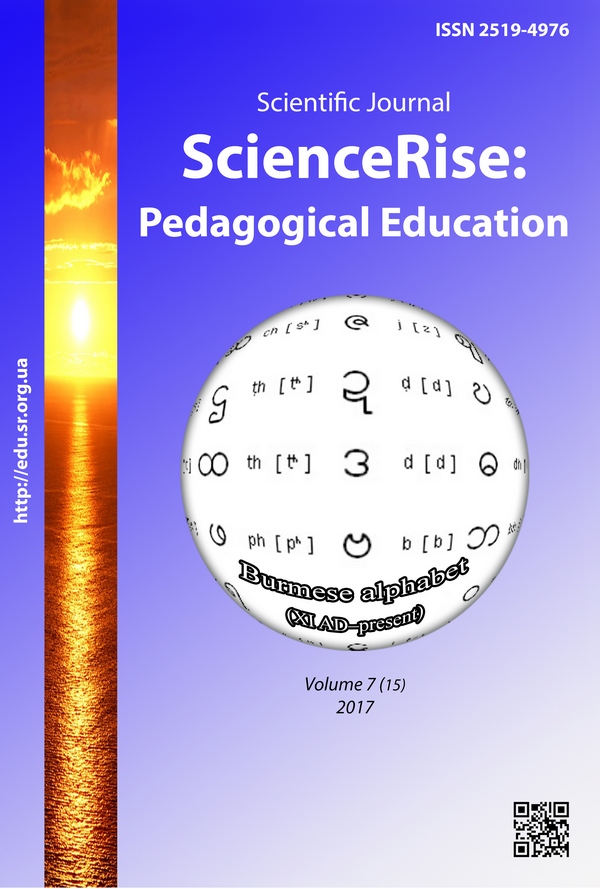Modern approaches to sterility treatment in women with ovary endometriosis using extracorporeal fertilization
DOI:
https://doi.org/10.15587/2519-4798.2017.107739Keywords:
sterility, endometriosis, ovary, ovarian reserve, folliculogenesis, extracorporeal fertilization, vitamin DAbstract
Aim of research: to raise the effectiveness of sterility treatment in women with ovary endometriosis using extracorporeal fertilization and vitamin D.
Materials and methods of research. There were examined 90 women with ovary endometriosis, divided in three clinical groups. The first group included 30 women, who underwent the program of extracorporeal fertilization traditionally after the surgical treatment of ovary endometriosis. The second group consisted of 30 women with sterility, who underwent the program of extracorporeal fertilization before the surgical intervention as to ovary endometriosis, the third one included 30 patients with sterility, who underwent the program of extracorporeal fertilization before the surgical intervention as to endometriosis and took cholecalciferol 5000 IU/day during 12 weeks. The control group included 30 women without endometriosis, who underwent the program of extracorporeal fertilization because of tube-peritoneal sterility.
Results of research. The ovarian reserve in women, who underwent the operation as to ovary endometriosis, is essentially decreased that is proved by the ultrasound determination of antral follicles condition and is explained by the uncontrolled extraction of ovarian follicles at the operation.
Ovary endometriosis leads to the decrease of oocytes quality at the expanse of dysregulation of paracrine ovarian factors, characterized by the ratio IL-8/IL-12. The study of the content of 25(ОН)-vitamin D demonstrated its low level in women with ovary endometriosis and sterility comparing with the control (р<0,05). The use of cholecalciferol 5000 IU/day during the program of extracorporeal fertilization favored the increase of its effectiveness.
The received data demonstrate the optimization of sterility treatment in women with ovary endometriosis using the program of extracorporeal fertilization before the surgical treatment and additional use of vitamin D. The elaborated method allows to increase the pregnancy frequency, favors the decrease of the number of days of stimulation, decrease of the total dose of preparations, necessary for ovulation stimulation that is probably conditioned by the absence of the injury of antral follicles by the surgical intervention. The use of the tactics of sterility treatment with ovary endometriosis using extracorporeal fertilization before the surgical treatment at the background of the therapy by vitamin D increases its effectiveness almost twice due to the decrease of the risk of the ovarian reserve destruction at the surgical treatment at normalization of the content of vitamin D.
Conclusion. The sterility treatment in women with ovary endometriosis using extracorporeal fertilization before the surgical treatment at the background of vitamin D intake allows to increase the effectiveness of the therapy essentially at the expanse of the use of the untouched ovarian reserve and normalization of paracrine indices of folliculogenesis
References
- Yuzko, O. M. (2016). Dopomizhni reproduktyvni tekhnolohiyi Ukrayiny – 25 rokiv uspikhu. Zbirnyk naukovykh prats' Asotsiatsiyi akusheriv-hinekolohiv Ukrayiny, 2 (38), 393–395.
- Vovk, I. B., Zhylka, N. Ya., Zakharenko, N. F. et. al. (2012). Henitalnyi endometrioz. Kyiv, 34.
- De Ziegler, D., Borghese, B., Chapron, C. (2010). Endometriosis and infertility: pathophysiology and management. The Lancet, 376 (9742), 730–738. doi: 10.1016/s0140-6736(10)60490-4
- Dus, I. L., Kamlyuk, A. M. (2012). Lechenie besplodiya, assotsiirovannogo s endometriozom, s primeneniem gonadotropin-rilizing gormona Lyuprayd depo. Meditsinskie aspekty zdorov'ya zhenshchiny, 6-7 (58-59), 44–45.
- Tatarchuk, T. F., Zaharenko, N. F., Tutchenko, T. N. (2013). Novye podhody k problemnym voprosam lecheniya genital'nogo endometrioza. Reproduktivnaya endokrinologiya, 3 (11), 36–45.
- Rozhkovska, N. M., Krotenko, K. P. (2011). Klinichna efektyvnist' dyferentsiyovanoyi hormonal'noyi terapiyi zovnishn'oho hential'noho endometriozu. Reproduktyvna endokrynolohiya, 2, 25–28.
- Fannush, R., Babenko, O. M. (2013). Effektivnost' stimulyatsii superovulyatsii v programmah VRT u zhenshchin s predshestvuyushchimi operativnimi vmeshatel'stvami na pridatkah matki. Mediko-sotsial'nye problemy sem'i, 18 (1), 51–54.
- Povoroznyuk, V. V., Pludovski, P. (Eds.) (2015). Defitsit i nedostatochnost' vitamina D: epidemiologiya, diagnostika, profilaktika i lechenie. Kyiv: Izdatel' Zaslavskiy A. Yu., 262.
- Kamen, D. L., Tangpricha, V. (2010). Vitamin D and molecular actions on the immune system: modulation of innate and autoimmunity. Journal of Molecular Medicine, 88 (5), 441–450. doi: 10.1007/s00109-010-0590-9
- Boychuk, A. V., Kurylo, O. Yu. (2016). Ovarial'nyi rezerv zhinok z endometrioyidnymy kistamy. Zbirnyk naukovykh prats' Asotsiatsiyi akusheriv-hinekolohiv Ukrayiny, 2 (38), 60–66.
- Krasnopol'skiy, V. I., Gorskiy, S. L. (2009). Vliyanie hirurgicheskogo lecheniya endometrioidnyh kist yaichnikov na follikulyarnyy rezerv pri endometrioz-assotsiirovannom besplodii. Rossiyskiy vestnik akushera-ginekologa, 9 (5), 60–64.
Downloads
Published
How to Cite
Issue
Section
License
Copyright (c) 2017 Vladislav Feskov

This work is licensed under a Creative Commons Attribution 4.0 International License.
Our journal abides by the Creative Commons CC BY copyright rights and permissions for open access journals.
Authors, who are published in this journal, agree to the following conditions:
1. The authors reserve the right to authorship of the work and pass the first publication right of this work to the journal under the terms of a Creative Commons CC BY, which allows others to freely distribute the published research with the obligatory reference to the authors of the original work and the first publication of the work in this journal.
2. The authors have the right to conclude separate supplement agreements that relate to non-exclusive work distribution in the form in which it has been published by the journal (for example, to upload the work to the online storage of the journal or publish it as part of a monograph), provided that the reference to the first publication of the work in this journal is included.









